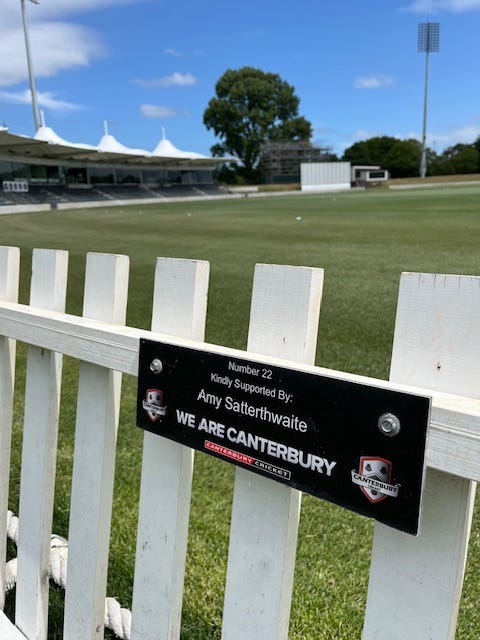The more you visit New Zealand the more you recognise the sporting traits which characterise the nation, the humility which is not just worn as a badge of honour but even seen as a rite of passage.
Test captain, Tom Latham, laughed about it after leading his team to their astonishing 3-0 series victory in India just a couple of weeks ago: “It’s probably worth a bit of a hoo-ha but that’s not the way of things here, really, but we’re very proud of what we’ve achieved,” he said.
Latham is a proud Cantabrian from Christchurch where the first Test against England starts on Thursday. The modest Hagley Park has been applying whatever lipstick and mascara it can find for the last 48-hours and hospitality tents are being erected at the back of the grass banks which surround 90% of the ground.
Almost every, small section of the white picket-fence which surrounds the playing field bares a small plaque thanking the donor which sponsored it. Car dealerships, bakeries, laundries and estate agents are amongst the donors which keep the association and venue afloat, and there are plenty of personal and family contributions.
Legendary professionals who have served their provinces, states or counties for many years in other countries might wonder what their employers could do for them in retirement. Name a box, gate or even stand after them in gratitude and commemoration? Not the Kiwi way, it seems. Quite the opposite.
Amy Satterthwaite, one of the greatest Canterbury Magicians players ever, is currently remembered at the Hagley Oval for the small plaque which recognises her sponsorship of a picket. It was not, in her case, what they could do for her, but what she could do to repay what they had done for her. It’s so New Zealand.
Likewise, the photograph of the ‘lawnmowing man’ on my previous column. A stunning piece of artwork made from multiple, small pieces of welded metal and brilliantly painted. Elderly man in long socks performing an unexciting chore. No name or plaque crediting the artist, or apparent reason for its existence. Just somebody doing something creative to put a smile on other people’s faces. So, so New Zealand.
Anyway, this golden moment in Test cricket’s 150-year lifespan is about to continue with South Africa facing Sri Lanka at Hollywoodbets Kingsmead tomorrow and New Zealand hosting England at the Hagley Oval. Conventional wisdom, and history, suggests the Proteas and England are favourites. But neither applies any more.
Not only can the top six or seven Test nations beat any of the others, they can do so by emphatic and completely unpredictable margins. Pessimists might ponder whether this is because the game has weakened with more ‘holes’ in teams which can be exploited. Optimists might have a stronger argument.
More cricketers than ever before are recognising, and accepting, that they have neither the skill nor stamina to play Tests, even if they have the desire. For over a century, when Test cricket was the only level above the domestic game to which one could aspire, giving up on doing so too early in a career was a shaming admission of failure. But no longer. Now there are alternative courses and less judgement.
Now that there are less candidates for Test cricket one might suppose that the product would become poorer but the opposite is true. Rather than selectors having to sift through the records and form of hundreds of potentials, an increasingly efficient process of self-induced, Darwinian ‘natural selection’ has reduced the size of the herd but strengthened it. Just a thought.
But if Kagiso Rabada and Tristan Stubbs, as random but significant examples, continue to display such passion and commitment to Test cricket, despite the millions of dollars they have already made and will make in the future, then we may all continue to live with hopeful smiles.







Hi Neil - the sculpture is called Timothy Stableman by sculptor Hannah Kidd, part of her Avonside Drive series: “everyday heroes based on people Hannah witnessed in the Methven and Christchurch communities offering gestures of kindness, supporting others, or maintaining familiar routines following the Canterbury earthquakes”
https://www.scapepublicart.org.nz/artwork/avonside-drive/
Hi Neil. Glad you are enjoying Christchurch. An interesting fact is that England's Brydon Carse was born & educated in Port Elizabeth, & Glenn Phillps the Black Cap was born 300 km away in East London! Brydon's father James was a fast bowler for EP in the Kepler Wessels era. Thanks Lorraine Austin